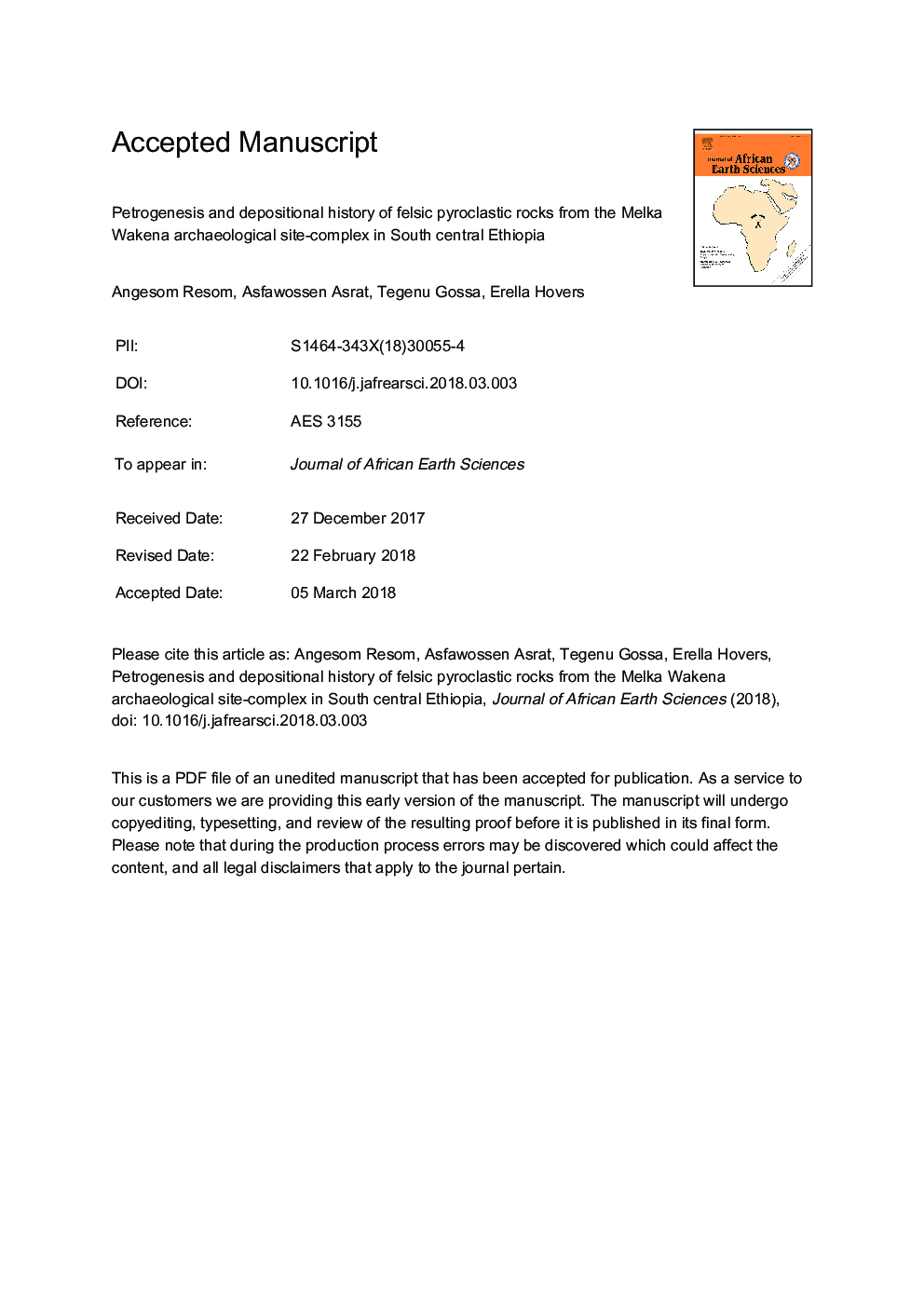| کد مقاله | کد نشریه | سال انتشار | مقاله انگلیسی | نسخه تمام متن |
|---|---|---|---|---|
| 8913495 | 1640166 | 2018 | 56 صفحه PDF | دانلود رایگان |
عنوان انگلیسی مقاله ISI
Petrogenesis and depositional history of felsic pyroclastic rocks from the Melka Wakena archaeological site-complex in South central Ethiopia
ترجمه فارسی عنوان
پتروژنز و تاریخ پوسیدگی سنگهای پراکلاست فلسکی از سایت مجتمع باستان شناسی ملکا واکنا در مرکز جنوبی اتیوپی
دانلود مقاله + سفارش ترجمه
دانلود مقاله ISI انگلیسی
رایگان برای ایرانیان
کلمات کلیدی
ملکا واکنا، حاشیه ریف، ذخایر پیروکلاستی، تاریخ انباشت، آتشفشانی های بازسازی شده
موضوعات مرتبط
مهندسی و علوم پایه
علوم زمین و سیارات
زمین شناسی
چکیده انگلیسی
The Melka Wakena archaeological site-complex is located at the eastern rift margin of the central sector of the Main Ethiopian Rift (MER), in south central Ethiopia. This wide, gently sloping rift shoulder, locally called the “Gadeb plain” is underlain by a succession of primary pyroclastic deposits and intercalated fluvial sediments as well as reworked volcaniclastic rocks, the top part of which is exposed by the Wabe River in the Melka Wakena area. Recent archaeological survey and excavations at this site revealed important paleoanthropological records. An integrated stratigraphic, petrological, and major and trace element geochemical study has been conducted to constrain the petrogenesis of the primary pyroclastic deposits and the depositional history of the sequence. The results revealed that the Melka Wakena pyroclastic deposits are a suite of mildly alkaline, rhyolitic pantellerites (ash falls, pumiceous ash falls and ignimbrites) and slightly dacitic ash flows. These rocks were deposited by episodic volcanic eruptions during early to middle Pleistocene from large calderas along the Wonji Fault Belt (WFB) in the central sector of the MER and from large silicic volcanic centers at the eastern rift shoulder. The rhyolitic ash falls, pumiceous ash falls and ignimbrites have been generated by fractional crystallization of a differentiating basaltic magma while the petrogenesis of the slightly dacitic ash flows involved some crustal contamination and assimilation during fractionation. Contemporaneous fluvial activities in the geomorphologically active Gadeb plain deposited overbank sedimentary sequences (archaeology bearing conglomerates and sands) along meandering river courses while a dense network of channels and streams have subsequently down-cut through the older volcanic and sedimentary sequences, redepositing the reworked volcaniclastic sediments further downstream.
ناشر
Database: Elsevier - ScienceDirect (ساینس دایرکت)
Journal: Journal of African Earth Sciences - Volume 142, June 2018, Pages 93-111
Journal: Journal of African Earth Sciences - Volume 142, June 2018, Pages 93-111
نویسندگان
Angesom Resom, Asfawossen Asrat, Tegenu Gossa, Erella Hovers,
